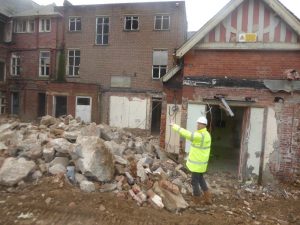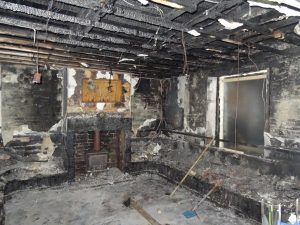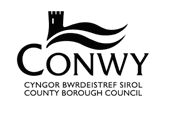< Back to latest news
All too often the value a property is insured for is incorrect, having been arrived at by guesswork or based on market value. Having a detailed reinstatement cost assessment is crucial. The application of ‘averaging’ clauses by insurance companies can lead to shortfalls in payouts.

Assessing the Value
The insurers request a value for the building to be insured. This value is not the market value that would be paid for the building, but the cost to construct. At its simplest, the valuation can be assessed by reference to the size of the building and applying ranges of build values. However, more detailed assessments are required where the building is not typical, of which there are many.
Sometimes the rebuild value is purposely lowered, with the incorrect assumption this will result in a large saving on the premium. From experience, the savings are usually fairly modest, with the building value not being the primary concern of the insurer.
Averaging Out
If a claim is made, the first port of call by the insurer is to check the building is insured for the correct sum. If the building is underinsured, then an ‘averaging’ clause may apply. In these circumstances, the final payout of a claim is reduced based upon the degree to which the building is underinsured.
For instance, if a building should cost £200,000 to rebuild, but is insured for only £100,000, then the insurer will see this as being 50% underinsured. If a claim of £100,000 was made, the insurer would pay just £50,000, 50% of the sum insured; this is the ‘averaging’ clause.
When and How Often should RCA’s be carried out
A reinstatement cost assessment needs to be carried out at the start of involvement with a building. In many cases, this needs to be done as a due diligence exercise unless there is evidence of a proper assessment already available.
Once the assessment is in place, it is possible to undertake desktop updates. Costs for construction do fluctuate over time, this isn’t just due to inflation. Changes in Building Regulations can have a significant impact. In the last 10 years, thermal and acoustic insulation requirements have become more demanding. This changes the way a building would now be built compared with 20 years ago and the costs of meeting these standards increase.
When significant alterations are made to a property, the insurance impact should be considered. The most extreme is the conversion from one use to another, the common change being from commercial or retail to residential. The alterations then create a totally different scenario when assessing costs to rebuild and will often bring in different areas of the Building Regulations standards.
Mitigating the Risks
The application of ‘averaging’ clauses is common. Dabinett has worked with several clients where the insurer has offered lesser cash settlements due to the sum insured being perceived as too low. In these circumstances, Dabinett has carried out detailed assessments and negotiations with the insurer to secure higher payouts. However, there is a limit to negotiation, although usually there is some merit in questioning the insurer.
The best mitigation is to either have a one-off assessment or request a desktop review to see if there is potential a building is underinsured. If the building is certainly insured at the right level, this avoids a simple risk.
Dabinett’s Edge
On the face of it, the reinstatement cost assessment is simple. However, the accurate assessment is dependent on the knowledge the surveyors have. Our chartered surveyors’ strength is in their experience, not least:
Summary
The key is to have an accurate building reinstatement cost assessment from the outset or to have this reviewed as early as possible. If things go awry, then speaking with us can help rescue the situation, as we can provide guidance and make careful negotiation.
Dabinett’s principal surveyors are all members of the Royal Institute of Chartered Surveyors (RICS).








